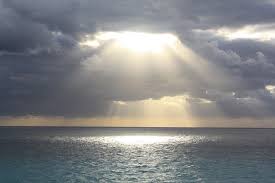Moshe Kempinski
Continuing our studies in the portion of Breishit (Genesis 1:1–6:8)
The first chapter of Genesis describes the creation of the world in seven stages or “days”. Every day ends with the dramatic declaration “and God saw that it was good”. That was true for every one of the six days except on the second day “And God said, “Let there be an expanse in the midst of the water, and let it be a separation between water and water.” (Genesis 1:6).
The day of separation between the water and the other water was not defined as good.
The Midrash explains that the separation of the waters caused great “sadness” and consternation” amidst the “Lower” waters who were suddenly disconnected from the “Heavenly “waters .the Hassidic masters describe the “lower( earthly) waters” as the “crying waters”(Mayim Bochim).
They are saddened by their disconnection and they cry and yearn to be reunited.
That is in fact the secret of the great joyful celebrations every day of Sukkot( The Feast of Tabernacles) .One of Sukkot’s most joyous observances was known as Simchat Beit Hashoeivah, the Celebration of the Water-Drawing. During Temple times water would be drawn from the Shiloach springs at the southern tip of the City of David . Then that water was libated ( poured unto) unto the altar in the Temple.After being drawn forth from the springs they were brought into the temple area with great rejoicing and the blowing of trumpets.
Why would that be ?
The source of the joy was the bringing together that which was torn asunder.
The Earthly “crying” waters were reunited through the alter with the Heavenly waters. The yearning was in fact the spiritual force that brought the fixing.
It is interesting to remember that we mortals are made up of 75% water. Our bodies are made up of “crying waters”(Mayim Bochim). When we shed a tear we are expressing a deeper yearning.
A yearning brought about by separation.
Yet it is that same yearning that brings about reunification.
